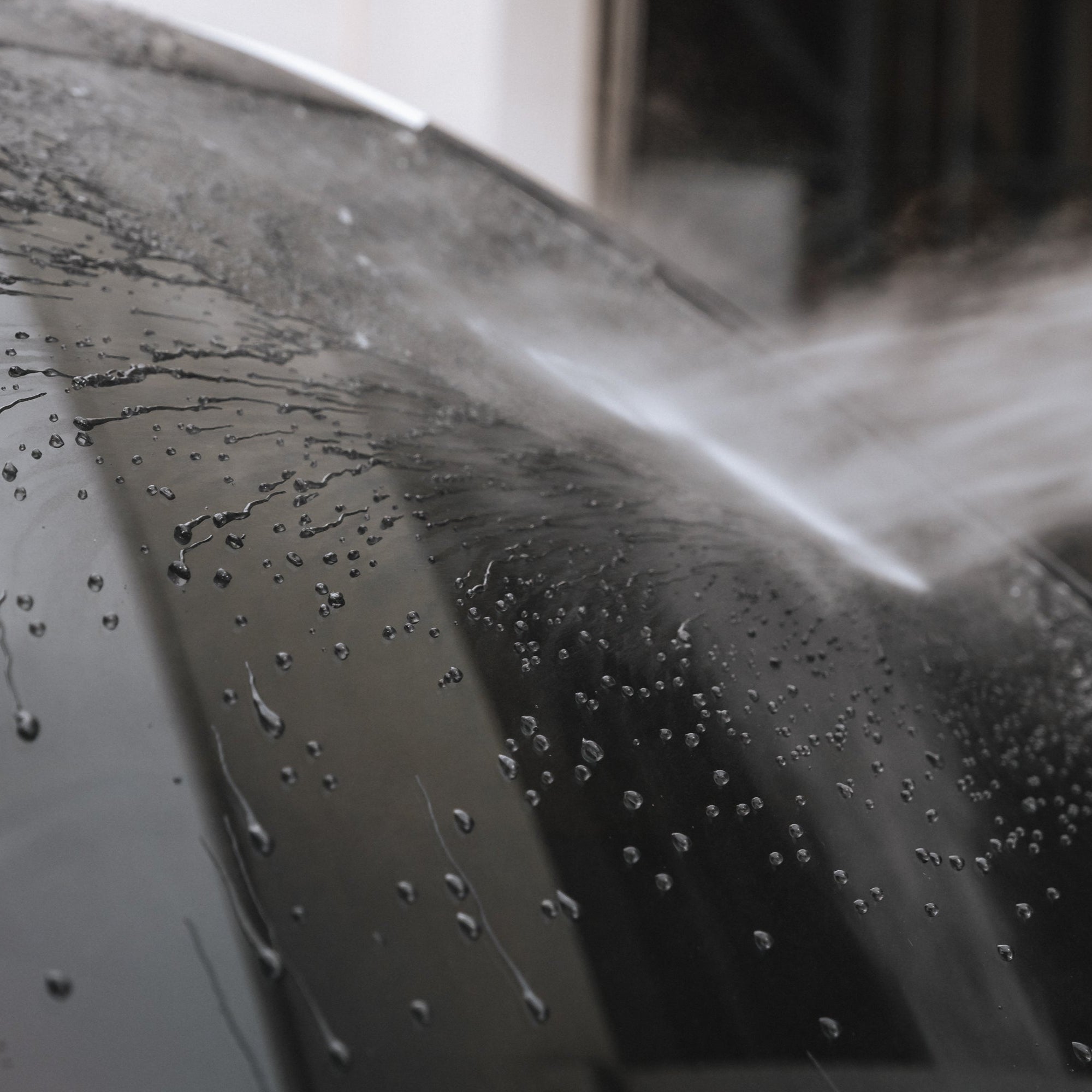Specialist Tips for Maintaining Your Lorry After Applying Ceramic Coating
Specialist Tips for Maintaining Your Lorry After Applying Ceramic Coating
Blog Article
Comprehending the Science Behind Ceramic Coating for Enhanced Vehicle Toughness
The scientific research of ceramic covering is changing vehicle maintenance by providing a formidable guard versus severe environmental elements. As we check out the complex structure and application process of ceramic coverings, we discover the tricks behind their superior security and longevity (ceramic coating). Exactly how does this compare to typical approaches, and what effects does it have for automobile upkeep in the long term?

Structure of Ceramic Coatings
Ceramic finishings are mainly composed of silicon dioxide (SiO2), which is obtained from natural products like quartz and sand. In enhancement to SiO2, ceramic finishes frequently include titanium dioxide (TiO2) for enhanced UV protection and boosted resistance to environmental pollutants.
The formula of ceramic coatings is a precise process where the concentration of SiO2 can considerably affect the layer's performance. Higher SiO2 content usually causes higher resilience and hardness, contributing to the covering's ability to withstand scratches and chemical etching. The balance of parts is important; too much SiO2 can make the finish breakable, while as well little can endanger its protective properties.
Makers might additionally incorporate extra materials, such as polysilazane, to boost versatility and simplicity of application. These ingredients boost the finishing's hydrophobic residential properties, guaranteeing water and contaminants grain off the surface area easily. This engineered structure highlights the efficiency of ceramic finishes in guarding a lorry's exterior against a variety of adverse conditions.
Application Refine Explained
Applying a ceramic layer to a car entails numerous essential steps, each vital to making certain ideal adhesion and performance of the safety layer - ceramic coating. The process starts with an extensive wash and purification of the car's surface to eliminate dust, gunk, and previous waxes or sealers. This step is critical as any type of contaminants left externally can hinder the finish's ability to bond successfully
Following the first cleaning, the following action involves brightening the lorry to get rid of any flaws, such as swirl marks or scrapes. Polishing makes sure a smooth surface area, which is vital for the coating to adhere appropriately and provide an uniform coating. After brightening, a surface prep work spray is used to get rid of any type of staying residues and make sure that the surface is totally clean.

Safety Advantages
Typically hailed for its exceptional safety qualities, a ceramic finish offers many benefits that dramatically enhance automobile durability. At its core, ceramic finish creates a hard, semi-permanent barrier over a vehicle's outside, which acts as a guard versus various environmental threats.
Moreover, ceramic finishes display hydrophobic buildings, indicating they repel water and help with a self-cleaning impact. This feature reduces the adherence of dust and mud, simplifying maintenance and cleaning processes. The finish's resistance to chemical etching further ensures that the car's surface area continues to be unblemished despite exposure to harsh cleaning agents and contaminants.
Along with these safety advantages, the ceramic layer boosts a vehicle's visual appeal by producing a glossy finish that accentuates color depth and clarity. This not just maintains the lorry's aesthetic allure yet likewise adds to its lasting worth by protecting the stability of its exterior in time.
Comparing to Traditional Methods
Unlike traditional methods of vehicle defense, such as shaving or sealants, ceramic finishings provide a more durable and long lasting option. Where waxes and sealants generally provide a temporary layer of defense, commonly needing reapplication every few months, ceramic layers form a semi-permanent bond with the lorry's paint. This bond develops a safety layer that is resistant to ecological pollutants, UV damages, and minor abrasions.
Traditional waxes are mostly made up of natural elements like carnauba wax, supplying a glossy coating however lacking the robust safety top qualities of ceramic finishes. Sealants, while artificial and offering somewhat much better longevity than waxes, still fall brief in contrast to the resilience and chemical resistance of ceramic layers. The sophisticated technology of ceramic finishes incorporates nanotechnology, which permits them to fill in tiny blemishes in the paint surface, causing a smoother and much more hydrophobic coating.
In terms of application, ceramic finishings require a more thorough process, commonly requiring specialist installation to make certain optimal performance. This contrasts with the reasonably straightforward application of sealants and waxes, which can be used in the house. Nevertheless, the premium protection and aesthetic enhancement given by ceramic finishings warrant the investment for those seeking long-lasting automobile conservation.
Durability and Upkeep
Just how does the longevity of ceramic finishings translate into convenience of upkeep for lorry proprietors? The innovative formula of ceramic coverings supplies a robust safety layer on the check these guys out car's surface area, which significantly extends the life expectancy of the cars and truck's outside coating. This longevity indicates that the finish works as go to the website a guard versus environmental pollutants such as UV rays, bird droppings, and road grime, which can otherwise deteriorate paintwork in time. As an outcome, vehicles coated with ceramic items require less regular cleaning and detailing initiatives, therefore minimizing upkeep time and expenses for owners.
Moreover, the hydrophobic nature of ceramic finishings makes it possible for water and other fluids to bead up and roll off the surface, lugging dust and debris with them. While the finishing itself is resilient, it is not completely maintenance-free. Thus, ceramic finishings supply a beneficial balance between long-lasting toughness and simplified maintenance for automobile treatment.
Verdict
Ceramic coatings, with their advanced chemical structure of silicon dioxide and titanium dioxide, offer a powerful barrier against environmental damages, significantly improving automobile longevity. The hydrophobic residential or commercial properties promote self-cleaning, reducing upkeep initiatives and maintaining visual allure. When compared to conventional methods, ceramic coverings offer premium protection against UV rays, oxidation, and chemical etching. This modern technology expands the life expectancy of car exteriors, making it a cutting-edge option for long-lasting preservation and marginal maintenance.
The solution of ceramic finishings is a meticulous procedure where the concentration of SiO2 can substantially affect the finishing's efficiency.Applying a ceramic layer to a car entails a number of essential actions, each vital to ensuring ideal attachment and performance of the protective layer.Usually hailed for its outstanding protective top qualities, a ceramic covering uses numerous benefits that substantially enhance car longevity. The advanced formula of ceramic layers provides a robust safety layer on my link the lorry's surface area, which significantly extends the life expectancy of the auto's exterior finish.Ceramic finishings, with their sophisticated chemical composition of silicon dioxide and titanium dioxide, supply an awesome obstacle versus ecological damages, significantly enhancing automobile durability.
Report this page